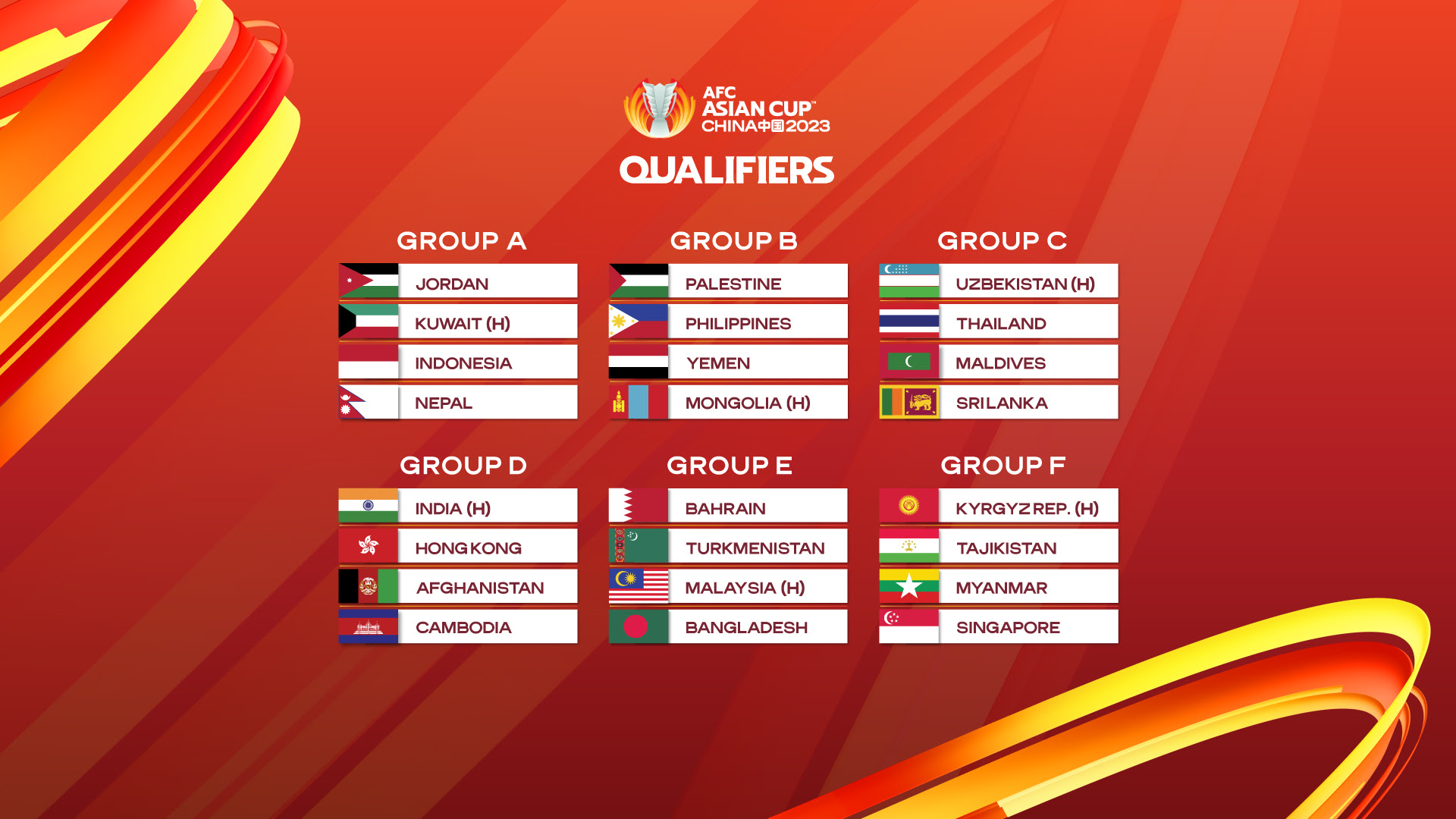
The Road to Paris and Beyond: Unpacking the AFC U23 Asian Cup Draw Schedule
The sound of shuffling balls, the hushed anticipation in the room, the collective gasp or cheer that follows each reveal – these are the hallmarks of a football draw ceremony. For the AFC U23 Asian Cup, this moment is far more than just a procedural step; it’s the unveiling of a crucial roadmap for the continent’s most promising young talents, a gateway to the Olympic Games, and a significant benchmark for national footballing ambitions. As the footballing world eagerly awaits the official draw schedule for the upcoming AFC U23 Asian Cup, set to be hosted by Qatar, the air is thick with speculation, hope, and the strategic calculations that will define the tournament’s early narratives.
This article delves deep into the significance of the AFC U23 Asian Cup draw, exploring its implications for the participating teams, the host nation, and the broader landscape of Asian football. We will dissect the tournament’s structure, the stakes involved, and why this particular draw holds so much weight for the dreams of young athletes aiming for the pinnacle of international sport.
The AFC U23 Asian Cup: A Crucible for Future Stars
Initiated in 2013 (with the inaugural edition played in 2014), the AFC U23 Asian Cup, previously known as the AFC U-22 Championship, quickly established itself as a cornerstone of Asian football development. Held biennially, it serves two primary, interconnected purposes: identifying the continent’s most talented U23 players and, crucially, acting as the final qualification tournament for the men’s football event at the Summer Olympic Games. For the 2024 edition, this means the top three teams will automatically qualify for Paris 2024, with the fourth-placed team entering a play-off against a representative from another confederation. This direct link to the Olympics elevates the tournament beyond mere regional supremacy, imbuing every match, every group, with profound international significance.
The competition brings together 16 of Asia’s best U23 national teams, who have navigated a challenging qualification phase to earn their spot. These teams represent a diverse tapestry of footballing cultures, from the technical prowess of East Asian giants like Japan and South Korea, the physical strength and tactical discipline of West Asian powerhouses such as Saudi Arabia and Qatar, to the burgeoning potential of Southeast Asian nations like Vietnam and Thailand, and the resilient spirit of Central and South Asian contenders.
The Draw Ceremony: Where Destinies Begin to Unfold
The announcement of the draw schedule marks the official countdown to the tournament. While the precise date and venue for the draw ceremony are meticulously planned and revealed by the AFC, the event itself is a spectacle. Typically held in the host nation’s capital or a prominent sporting venue, it gathers national team coaches, federation officials, media, and football legends.
The draw procedure is based on seeding, often determined by the teams’ performance in the previous edition of the U23 Asian Cup or their recent youth international rankings. This ensures a certain level of fairness and balance, preventing an immediate “group of death” scenario that pits all the top contenders against each other in the opening rounds. Teams are usually divided into four pots, with Pot 1 containing the host nation and the highest-ranked qualifiers, and subsequent pots filled with teams of descending rank.
The process involves drawing one team from each pot into four different groups (Group A, B, C, D). For fans and analysts, this is the moment of truth. The permutations are endless, and the reveal of each team can send ripples of excitement, relief, or apprehension through the assembled delegates. A strong draw can provide a smoother path to the knockout stages, while a challenging group demands immediate tactical brilliance and resilience.
Qatar 2024: A Host with Unmatched Credentials
The choice of Qatar as the host nation for the AFC U23 Asian Cup 2024 further amplifies the tournament’s prestige. Following the unprecedented success of the FIFA World Cup 2022 and the recently concluded AFC Asian Cup 2023, Qatar has firmly cemented its reputation as a premier destination for major international football events. Its state-of-the-art stadiums, world-class training facilities, efficient transportation networks, and proven organizational capabilities promise a seamless and memorable tournament experience for teams and fans alike.
For the Qatari U23 national team, playing on home soil offers a distinct advantage. Familiarity with the climate, pitches, and local support can provide a crucial psychological edge. Having reached the semi-finals in 2018 and consistently performed well at youth levels, Qatar will undoubtedly be aiming not just for Olympic qualification but for the continental title itself, leveraging their home advantage to the fullest.
The Stakes: Olympic Dreams and Career Defining Moments
For the young athletes participating, the AFC U23 Asian Cup is a high-stakes affair. Beyond the pursuit of continental glory, the primary motivation for many is the chance to represent their country at the Olympic Games. For footballers, the Olympics is a unique multi-sport spectacle, offering an experience distinct from the FIFA World Cup. It’s a platform where future legends are often born, where raw talent meets immense pressure, and where performances can literally alter career trajectories.
A strong showing at this tournament can open doors to European leagues, secure spots in senior national teams, and elevate players to national hero status. Scouts from around the world will descend upon Qatar, eager to unearth the next big talent. The individual battles, the tactical duels, and the sheer desire to win will be palpable on every pitch.
For national federations and coaches, the tournament is a critical barometer of their youth development programs. It’s an opportunity to assess the depth of their talent pool, fine-tune their tactical approaches, and build cohesion within their squads. The results will directly impact their standing within Asian football and influence future investment in youth academies and coaching methodologies.
Anticipated Narratives and Potential “Groups of Death”
Once the draw is complete, the focus immediately shifts to analyzing the groups. Football fans and pundits will begin to identify potential “Groups of Death” – pools featuring multiple strong contenders, promising intense, high-quality matches from the outset. Imagine a group comprising a West Asian powerhouse like Saudi Arabia, an East Asian giant like South Korea, a resilient Southeast Asian side such as Vietnam, and a dark horse from Central Asia like Tajikistan. Such a group would guarantee thrilling encounters and a fiercely contested race for the knockout spots.
Rivalries will also add spice to the group stage. A draw pitting Japan against South Korea, or Saudi Arabia against Iran, would undoubtedly capture headlines and ignite passionate fan bases. These matches are not just about points; they are about pride, history, and bragging rights.
Beyond the established powers, the tournament also offers a stage for emerging nations and potential dark horses. Teams that have shown flashes of brilliance in qualification, or those with a particularly exciting generation of players, could spring surprises. The beauty of youth football lies in its unpredictability; raw enthusiasm and unexpected tactical masterstrokes can often upset the established order.
The Road Ahead: From Draw to Kick-off
The period between the draw ceremony and the opening whistle is a critical phase for the participating teams. Coaches will meticulously analyze their opponents, devise tailored strategies, and fine-tune their squads through training camps and friendly matches. Players will intensify their preparations, both physically and mentally, knowing that the eyes of the continent – and indeed, the world – will be upon them.
For fans, the draw schedule’s announcement signifies the beginning of their journey. It’s when travel plans might be finalized, tickets secured, and the vibrant discussions on social media truly begin. The excitement builds as each group’s dynamics are debated, key players are highlighted, and predictions are made.
Conclusion: A Tournament of Promise and Potential
The AFC U23 Asian Cup is more than just a football tournament; it’s a celebration of youth, talent, and the enduring passion for the beautiful game across Asia. The draw schedule is the pivotal moment that transforms anticipation into tangible pathways, setting the stage for what promises to be an enthralling display of skill, determination, and tactical ingenuity.
As the balls are drawn and the groups are formed, the road to Paris 2024 will become clearer for 16 ambitious nations. The tournament in Qatar will not only crown a continental champion but also launch the careers of tomorrow’s footballing heroes, leaving an indelible mark on the landscape of Asian football for years to come. All eyes will soon turn to Qatar, ready to witness the unfolding drama of the AFC U23 Asian Cup.



